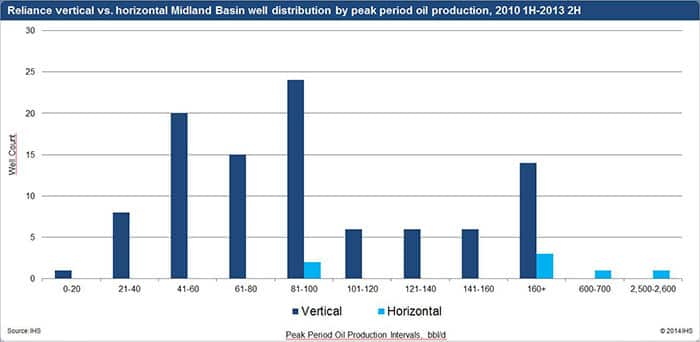Private E&Ps in the Permian garnering increased attention
Limited capital and horizontal drilling experience may drive smaller E&Ps in the Permian to JV with larger E&Ps, go public, or sell as horizontal drilling shows huge promise.
Unconventional Opportunities in the Permian
The Permian Basin is one of the hottest areas for North American unconventional plays. With most of the acreage already held, the best way for a publically traded E&P company to enter or expand its position in the collection of plays the basin offers will be to acquire one or more of the many private E&Ps operating in the region, or establish joint-ventures with them. The historical ability to drill cheap, shallow vertical oil wells has resulted in the presence of many small private operators in this area. These wells, however, have limited production potential, typically producing an average of 50 b/d in the peak month of production. It is precisely this historical development that limits the amount of available land in the area.
The main attraction of the Permian is the vast, quantities of oil-in-place in stacked reservoirs (Wolfcamp, Leonard, Bone Spring, and Cline, for example). The area has multiple prospective, oil-prone formations and, in some cases, multiple potential landing zones within a formation to place the lateral leg of a horizontal well. This abundance of potential resources is attracting operators. While the precise recovery factor or the volume of oil that can be produced remains unknown, the industry is convinced that over time new technologies and new techniques will boost recovery rates. This optimism regarding the technological outlook has encouraged the industry to acquire acreage that has the most oil and gas in-place. Consequently, acreage in the Midland and Delaware basins is in high demand.
But this abundance of drilling targets also has a downside variability. The industry will need several more years to optimize the drilling and completion techniques for each zone in each basin. Companies will also need to invest heavily to develop the multiple Permian plays. The smaller companies are likely best suited for exploring and establishing the repeatable drilling and completion practices in each play. Executing the development plan, however, is going to take billions of dollars. We believe the Permian needs to be developed by larger oil and gas firms with strong balance sheets capable of handling the vast capital requirements to develop the play in the most economically efficient manner. Consequently, as the life cycle of the play evolves we expect shifts in the ownership of the acreage in the Permian. Right now horizontal drilling and completion technologies have created a new life cycle for the Midland and Delaware basins.
The Permian has long been exploited using traditional vertical wells; only recently has the industry reported vastly improved horizontal well results. The industry appears to have accomplished a technological leap in the second half of 2013, with many public operators reporting initial production rates from horizontal wells in the Permian exceeding 1,000 boe/d.

Who's driving the horizontal well improvements?
The improving horizontal well results in the Permian have been driven by the publically traded companies. The private E&Ps are largely still drilling vertical wells, leading us to conclude that few private E&Ps in the Permian have any significant experience with drilling horizontal wells. In most cases the Permian will be developed with horizontal wells, so most of the private operators will need to either, joint venture with the more experienced public companies to adopt horizontal drilling techniques or sell their positions.
Traditionally, buying private operators has been one of the growth strategies of the public E&P companies and selling to the public companies is a common exit strategy for the private operators. This trend, however, is changing. Recently, several private companies with operations focused in the Permian have opted to go public rather than sell. This made financial sense because the values implied by going public have exceeded average M&A values. For example, M&A deal values in the Midland Basin have averaged around $14,000 per acre. The recent IPO (initial public offering) of "pure play" Permian operator Athlon Energy implied a value of $30,000 an acre to the company's Permian holdings. The IPO of RSP Permian implied a value for its Permian acreage at $55,000 per acre. This premium over average implied M&A transaction values suggests more private companies in the Permian will be considering the IPO option rather than divesting. However, the highest valuations will go to the private companies which have the most horizontal drilling experience. More information on individual companies, is available in the IHS Energy Company Play Analysis report authored by Sven del Pozzo and entitled "Midland Basin Horizontal Wolfcamp - Private E&Ps".
Several publically traded Permian companies have warned of cost pressures and service availability shortages. Should a significant number of private E&Ps decide to shift from drilling vertical to horizontal wells, that service pressure could become acute. This may suggest that public-private company joint ventures may be more common in 2014 as private operators decide to test the horizontal drilling potential of the acreage before considering divestment options.
Please contact us for more information on subscribing to Energy Company & Transaction Research.
Posted 18 March 2014
This article was published by S&P Global Commodity Insights and not by S&P Global Ratings, which is a separately managed division of S&P Global.